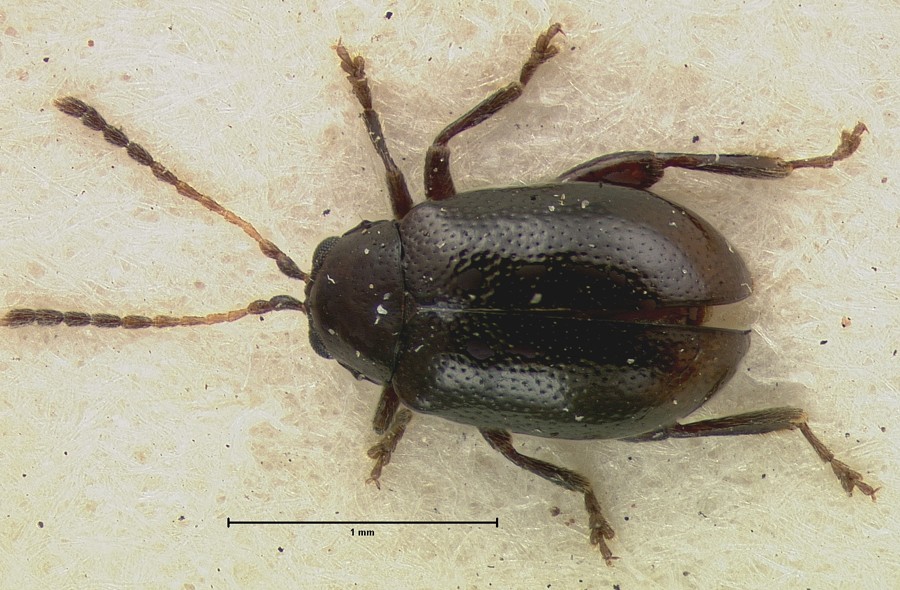Minute spurge flea beetle
(Aphthona abdominalis)

Description
Aphthona abdominalis is a species of leaf beetle known as the minute spurge flea beetle. It was used as an agent of biological pest control against the noxious weed leafy spurge (Euphorbia esula), but never established a viable population. The adult beetle is light orange with a black abdomen and only about 2 millimeters long. The female lays up to 100 eggs on or near leafy spurge, its host plant. The larva emerges and feeds on the roots of the plant, while the adult eats the leaves and flowers of the plant. Both larva and adult inflict damage on the plant by feeding. In its native range this beetle feeds on leafy spurge and other closely related plants. It is not known to attack other types of plants. This beetle is native to Eurasia. It was first released as a biocontrol agent for leafy spurge in the United States in the early 1990s, but apparently never established. A abdominalis was never introduced to Canada. This beetle is used for biocontrol less often than other Aphthona species. Aphthona is a genus of beetle, in the leaf beetle family Chrysomelidae, native to Europe and Asia. More specifically, Aphthona are flea beetles, meaning they have enlarged hind legs for jumping away from potential danger. There are some 300 species known worldwide. This flea beetle genus is important because of the usefulness of some species in controlling leafy spurge, a major invasive weed in parts of western North America. Several Aphthona species have been taken from Europe and introduced into localized areas of the United States and Canada, and some success against the weed is being seen. The six species used for this purpose include A. abdominalis, A. cyparissiae, A. czwalinae, A. flava, A. nigriscutis, and A. lacertosa, though A. abdominalis apparently never established a viable population and was never introduced in Canada. Control is generally thought to be effective, but results vary from site to site, which has been attributed to soilborne pathogens, phenology of spring, soil texture, and leafy spurge density. Control is less effective in sandy soils. Control may not be reliably observed and measured for 10 years or more.
Taxonomic tree:







